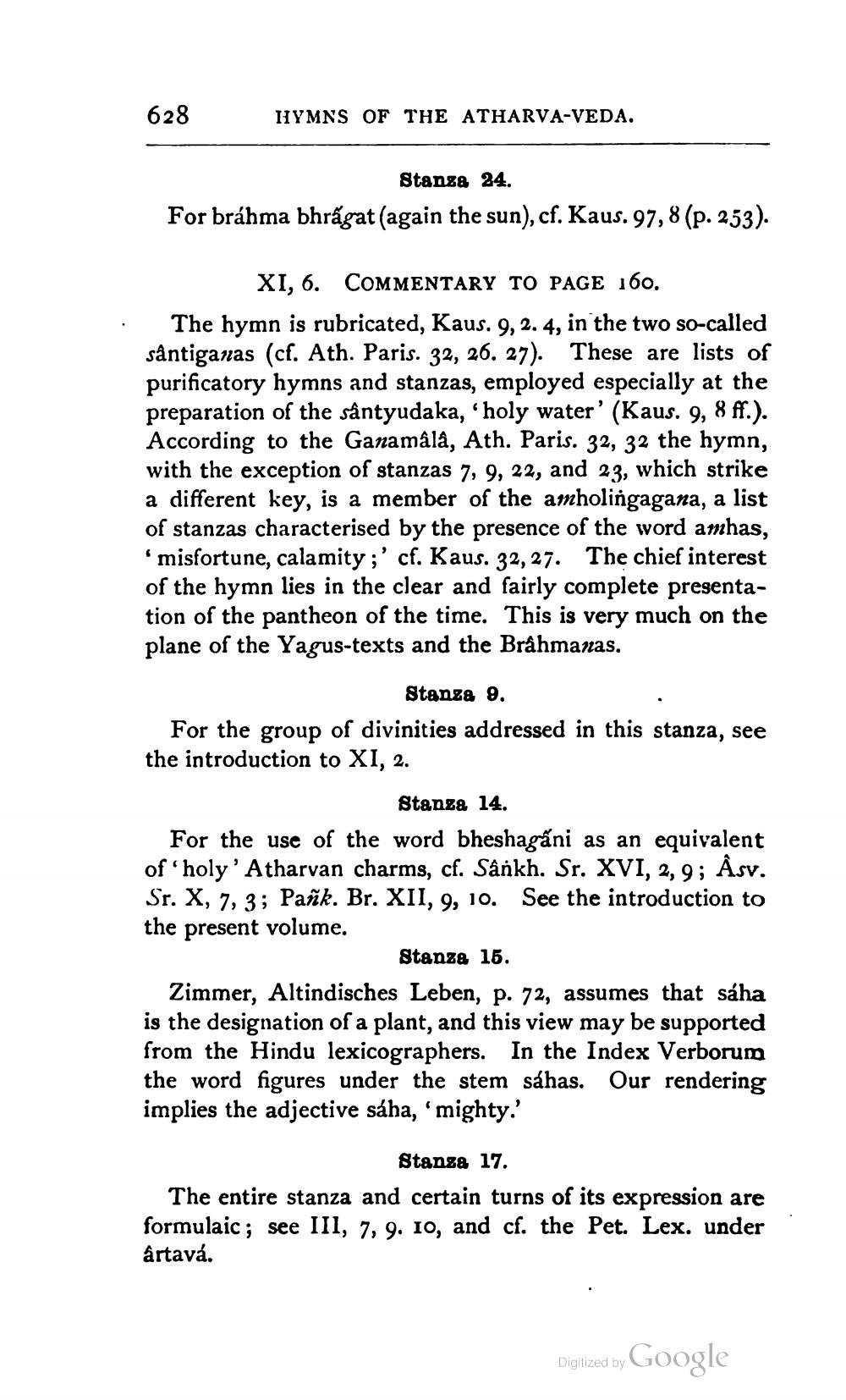________________
628
HYMNS OF THE ATHARVA-VEDA.
Stanza 24. For bráhma bhrágat (again the sun), cf. Kaus. 97,8 (p. 253).
XI, 6. COMMENTARY TO PAGE 160. The hymn is rubricated, Kaus. 9, 2. 4, in the two so-called såntiganas (cf. Ath. Paris. 32, 26. 27). These are lists of purificatory hymns and stanzas, employed especially at the preparation of the sântyudaka, 'holy water' (Kaus. 9, 8 ff.). According to the Ganamåla, Ath. Paris. 32, 32 the hymn, with the exception of stanzas 7, 9, 22, and 23, which strike a different key, is a member of the amholingagana, a list of stanzas characterised by the presence of the word amhas, misfortune, calamity;' cf. Kaus. 32, 27. The chief interest of the hymn lies in the clear and fairly complete presentation of the pantheon of the time. This is very much on the plane of the Yagus-texts and the Brahmanas.
Stanza 9. For the group of divinities addressed in this stanza, see the introduction to XI, 2.
Stanza 14. For the use of the word bheshagấni as an equivalent of holy 'Atharvan charms, cf. Sankh. Sr. XVI, 2,9; Åsv. Sr. X, 7, 3; Pañk. Br. XII, 9, 10. See the introduction to the present volume.
Stanza 16. Zimmer, Altindisches Leben, p. 72, assumes that saha is the designation of a plant, and this view may be supported from the Hindu lexicographers. In the Index Verborum the word figures under the stem sáhas. Our rendering implies the adjective sáha, 'mighty.'
Stanza 17. The entire stanza and certain turns of its expression are formulaic; see III, 7, 9. 10, and cf. the Pet. Lex. under ártavá.
Diglized by Google




